Broody Hens versus Incubators - The Pros and Cons
Many of us want to hatch chicks, but how should we do it? A broody hen, or an incubator? Below are some of the aspects you should take into consideration when making this decision.


Obtaining
It’s fairly easy to obtain an incubator. You can find them at local feed stores, online, and you can even make your own. Broody hens, on the other hand, might be harder to come by. Many production breeds have had the ‘broody gene’ bred out of them. This is because when a hen is broody, she is not producing eggs. In order for hens to produce as many as possible, scientists have bred this natural instinct out of them through artificial selection. Breeds that weren’t bred for production such as Cochins, Silkies, and old English games still go broody. In fact, out of my 22 cochin hens, 20 of them went broody this spring. So if you’d like to use a broody hen, it would be wise to own a couple of hens from breeds that weren’t bred for production.
Time of the Year
Time of the year is a huge aspect. Broody hens will usually only go broody in the spring and early to mid-summer which means you can only hatch in the spring and early to mid-summer. If you’d like to hatch year-round as I do, the better choice may be the incubator. Incubators are to be used indoors only in order to keep a stable temperature, because of this; it will make no difference whether you incubate in the summer or the winter. Another thing to consider with timing is that you can’t force a hen to become broody. When she becomes broody is up to her and may not be at your convenience. The incubator on the other hand can be pulled out whenever you’d like.

Collecting Eggs
Collecting eggs is similar for both broody hens and incubators, though you don’t have to collect for a broody. Broody hens can create their own nests with their own eggs to sit on, but usually, we would like them to sit on specific eggs. You should select the eggs from proven, healthy breeders that are fed a well-balanced diet. Eggs should be collected 3 times a day to avoid excessive heating or cooling. Avoid eggs that are excessively large or small. You should also avoid eggs that are excessively dirty. If collecting for a broody hen, don’t wash the eggs, but if you are collecting for an incubator, you have the choice. There are many debates on whether or not to wash the eggs and from my own experience, it doesn’t matter. The hatch rate of the washed eggs was just as high as the unwashed eggs in my incubator. If you do decide to wash them, always use water warmer than the eggs and scrub very gently so that you don’t push bacteria deeper into the pores of the eggs.

Storing Eggs
Storing eggs is the same for broody hens and incubators, though once again, you don’t have to store a broody hen’s eggs because she is capable of creating her own nest. For storing, the eggs should be kept around 55 – 65 degrees in an area with no drafts. A good place to keep them is in a basement. Never put them in front of a window or anywhere that can heat up. Eggs should also be tilted daily while in storage to prevent the yolk from sticking to the side of the egg. Simply place a block of some sort under one side of the carton, and then move it to the other side the following day. Humidity should be kept around 75% during storage. Humidity levels aren't that important, but they shouldn’t be too dry. You should also keep in mind that eggs can’t be stored forever. Their hatchability starts to decline after 7 days, though I’ve seen great hatch rates of eggs up to 14 days old. Before adding them to an incubator or giving them to a broody, make sure they are warmed up to room temperature to avoid excessive condensation.

Number of Eggs
A broody hen can only hatch the eggs that will fit underneath her while an incubator can hold any number of eggs. The number of eggs a hen can fit underneath of her depends on how big the eggs are and how big the hen is. The average amount is around 8 eggs. Another thing to remember when giving eggs to a broody hen is that the more eggs there are, the higher the risk of eggs being broken and not being fully covered. Incubators can be purchased or created to hold any number of eggs. Some incubators were created to only hold 2 eggs while others can hold thousands. It’s your choice when it comes to an incubator.
Sterilizing
Incubators and broody hens both need to be kept clean but in very different ways. A broody hen should have fresh clean bedding, water, and food. When they are broody, they are very susceptible to disease so you’ll need to watch their health. The hens should be periodically checked for mites and lice as they can kill a broody hen in her weakened state. Incubators need to be kept in pristine condition as they are the perfect place for bacterial growth. They need to be sterilized after a hatch, and before setting them up again. How you sterilize depends on what your incubator is made of. For my styrofoam Hova Bators, I use a solution of bleach water. Do some research on how to clean an incubator before you buy one.

Setting Up
A broody hen should be set up away from other chickens in a pristine environment. She should be protected from predators and it should be an area large enough for her to stretch and relieve herself. Incubators need to be set up days before adding eggs to ensure a correct and stable temperature. They should be set up in a room with constant temperatures and away from windows, vents, or anything else that could influence the temperature. Set up incubators according to the instructions that came with them. Give them adequate time to heat up before making any adjustments. Give them at least 2 hours after an adjustment before making additional adjustments. Some incubators take a lot of adjustment before they are correct so prepare a couple of days in advance.
Temperature
When using a broody hen, you don’t have to worry about temperature. She will pluck feathers from her underside and keep the eggs warm with her own body heat. If you’re using an incubator, however, the correct temperature will make or break your hatch. Forced air incubators need to be kept at a constant 99.5 degrees Fahrenheit while still-air incubators need to be kept at 101 – 102 degrees Fahrenheit. Temperatures should be measured at the top of the eggs because that is where the embryos develop. Even a 1-degree difference will greatly affect your hatch, so it’s important that you make sure your thermometer is accurate. Many thermometers are off by as much as 10 degrees so you should compare multiple thermometers and calibrate them to ensure accuracy. If temperatures are kept a bit too warm, chicks will hatch early and be at risk for deformities. If temperatures are kept a bit too cool, chicks will hatch late and be at risk for deformities. Another thing to watch for is fluctuation in temperatures. Try to keep fluctuations within 1 degree.

Humidity
When using a broody hen, you will not need to worry about humidity. The hen will naturally keep the eggs at the correct level. When using an incubator, humidity needs to be controlled. Incorrect humidity is often the cause of a failed hatch because humidity tends to be overlooked. If the humidity is too high, air cells will be undeveloped resulting in drowned chicks at the time of hatch. If the humidity is too low, air cells are overly developed resulting in chicks being unable to get into hatching position and if they are unable to get into the correct position, they often times suffocate in the shell. Humidity is released according to the surface area.
To increase humidity, increase the surface area of the water. To decrease humidity, decrease the surface area of the water. Raising or lowering depth won’t affect the humidity levels. Humidity is measured with a hygrometer. The most commonly recommended percentages are 50% humidity for the first 18 days of development, and 65% for the last 3 but there are other recommendations including dry incubation which confuse many people. The truth is, the correct humidity is different for everyone. It depends on where you live, the season, and many other factors. To figure out what humidity the eggs should be at, use an air cell chart or a scale. Air cell charts are used commonly and can be found on google images. Compare air cell sizes on days 7, 14, and 18 to the chart. If air cells are too large, increase the humidity. If they are too small, decrease the humidity. And of course, if they are correct, leave the humidity be. You can do the same thing by tracking the mass of an egg. An egg needs to lose a certain percentage of its mass before hatching.

Egg turning
A broody hen will naturally turn her eggs many times throughout the day for the first 18 days, but when using an incubator, you are in charge of turning them. Eggs should be turned 3 times a day for the first 18 days of incubation. They are turned so that the embryo doesn’t stick to the shell. Unturned eggs risk deformities. You can either purchase an automatic egg turner, or you can turn the eggs manually. Automatic turners will turn the eggs for you but can be expensive. If you’d like to manually turn your eggs, you should mark them with an X on one side and a 0 on the other with a pencil. This way you know which way to turn the eggs during each turning session. Turning should be done in fairly equal intervals so if you are going to turn them 3 times a day, you should turn them every 8 hours. You must stop turning the eggs on day 18 so that the chicks can get into hatching positions. If you continue turning, they could become disorientated.

Ventilation
When using a broody hen, you won’t have to worry about ventilation; the hen will take care of it herself. When using an incubator, you must be sure to have proper ventilation. If you purchased your incubator, most likely it’s already ventilated, though if you made your own incubator, you must provide adequate ventilation. Don’t overly ventilate as it will be hard to create a stable temperature and humidity, but embryos could suffocate if there is too little of it. To ventilate, simply put holes near the bottom of the incubator as well as the top. Heat rises, so warm air will flow through the top holes while at the same time drawing fresh air from the bottom holes.
Risks of a Broody Hen
There are some risks involved with broody hens. Hens will sometimes abandon their nests for no apparent reason. The eggs are left in the cold to slowly die which can be quite frustrating for the owner. Hens also sometimes break their eggs. They aren’t very gentle with the eggs and no matter how much bedding is in their nesting box, eggs may break. To help prevent eggs from breaking, keep the bedding full and don’t let her have too many eggs. Another possibility is the hen pooping on her eggs. The poop will block the eggs' pores and increase the chances of bacteria invading. Also, rotten eggs tend to go unnoticed. If left unattended, they will explode all over the hen and the other eggs from the buildup of gases. If this happens, first change the bedding material, then quickly wash the eggs (they are covered in bad bacteria), and then bathe the hen. You will have to blow dry her very well so that she can keep her eggs warm and you must do this very quickly so that the eggs don’t sit out for too long. I have done this before and received a 100% hatch rate (except the egg that exploded).

Risks of an Incubator
Since incubators are usually run on electricity, power outages are a common problem. If this happens, heat some water in water bottles and place them in the incubator. You can also cover the incubator with a blanket to help hold in its heat. Other risks include human errors such as forgetting to turn, or incorrect temperatures and humidity.

Here's a quick summary:
Broody Hen Pros
Broody Hen Cons
Incubator Pros
Incubator Cons
As you can see, there are advantages and disadvantages to both. If you would like a few chicks in the spring, you may want to use a broody while if you’d like to hatch large numbers year-round, you’ll probably want to use an incubator. This information is only to make you aware of the different aspects between the two. Once you make your decision, be sure to do further research.


Happy Hatching!
Many of us want to hatch chicks, but how should we do it? A broody hen, or an incubator? Below are some of the aspects you should take into consideration when making this decision.
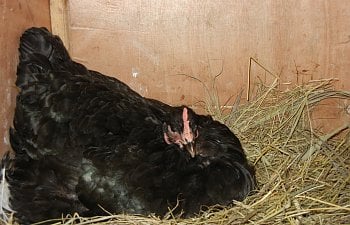
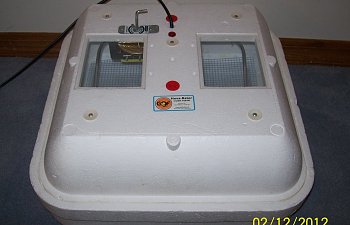
Obtaining
It’s fairly easy to obtain an incubator. You can find them at local feed stores, online, and you can even make your own. Broody hens, on the other hand, might be harder to come by. Many production breeds have had the ‘broody gene’ bred out of them. This is because when a hen is broody, she is not producing eggs. In order for hens to produce as many as possible, scientists have bred this natural instinct out of them through artificial selection. Breeds that weren’t bred for production such as Cochins, Silkies, and old English games still go broody. In fact, out of my 22 cochin hens, 20 of them went broody this spring. So if you’d like to use a broody hen, it would be wise to own a couple of hens from breeds that weren’t bred for production.
Time of the Year
Time of the year is a huge aspect. Broody hens will usually only go broody in the spring and early to mid-summer which means you can only hatch in the spring and early to mid-summer. If you’d like to hatch year-round as I do, the better choice may be the incubator. Incubators are to be used indoors only in order to keep a stable temperature, because of this; it will make no difference whether you incubate in the summer or the winter. Another thing to consider with timing is that you can’t force a hen to become broody. When she becomes broody is up to her and may not be at your convenience. The incubator on the other hand can be pulled out whenever you’d like.
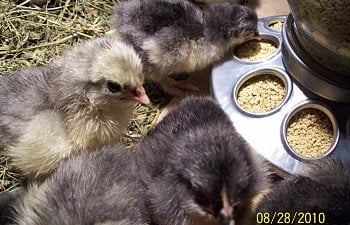
Collecting Eggs
Collecting eggs is similar for both broody hens and incubators, though you don’t have to collect for a broody. Broody hens can create their own nests with their own eggs to sit on, but usually, we would like them to sit on specific eggs. You should select the eggs from proven, healthy breeders that are fed a well-balanced diet. Eggs should be collected 3 times a day to avoid excessive heating or cooling. Avoid eggs that are excessively large or small. You should also avoid eggs that are excessively dirty. If collecting for a broody hen, don’t wash the eggs, but if you are collecting for an incubator, you have the choice. There are many debates on whether or not to wash the eggs and from my own experience, it doesn’t matter. The hatch rate of the washed eggs was just as high as the unwashed eggs in my incubator. If you do decide to wash them, always use water warmer than the eggs and scrub very gently so that you don’t push bacteria deeper into the pores of the eggs.
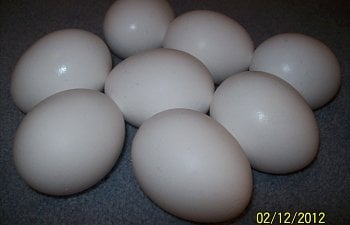
Storing Eggs
Storing eggs is the same for broody hens and incubators, though once again, you don’t have to store a broody hen’s eggs because she is capable of creating her own nest. For storing, the eggs should be kept around 55 – 65 degrees in an area with no drafts. A good place to keep them is in a basement. Never put them in front of a window or anywhere that can heat up. Eggs should also be tilted daily while in storage to prevent the yolk from sticking to the side of the egg. Simply place a block of some sort under one side of the carton, and then move it to the other side the following day. Humidity should be kept around 75% during storage. Humidity levels aren't that important, but they shouldn’t be too dry. You should also keep in mind that eggs can’t be stored forever. Their hatchability starts to decline after 7 days, though I’ve seen great hatch rates of eggs up to 14 days old. Before adding them to an incubator or giving them to a broody, make sure they are warmed up to room temperature to avoid excessive condensation.
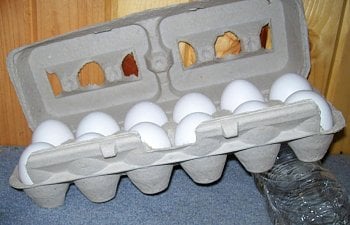
Number of Eggs
A broody hen can only hatch the eggs that will fit underneath her while an incubator can hold any number of eggs. The number of eggs a hen can fit underneath of her depends on how big the eggs are and how big the hen is. The average amount is around 8 eggs. Another thing to remember when giving eggs to a broody hen is that the more eggs there are, the higher the risk of eggs being broken and not being fully covered. Incubators can be purchased or created to hold any number of eggs. Some incubators were created to only hold 2 eggs while others can hold thousands. It’s your choice when it comes to an incubator.
Sterilizing
Incubators and broody hens both need to be kept clean but in very different ways. A broody hen should have fresh clean bedding, water, and food. When they are broody, they are very susceptible to disease so you’ll need to watch their health. The hens should be periodically checked for mites and lice as they can kill a broody hen in her weakened state. Incubators need to be kept in pristine condition as they are the perfect place for bacterial growth. They need to be sterilized after a hatch, and before setting them up again. How you sterilize depends on what your incubator is made of. For my styrofoam Hova Bators, I use a solution of bleach water. Do some research on how to clean an incubator before you buy one.
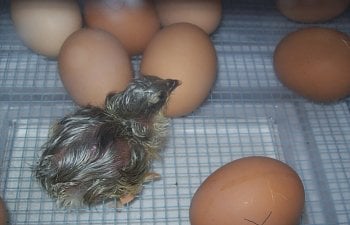
Setting Up
A broody hen should be set up away from other chickens in a pristine environment. She should be protected from predators and it should be an area large enough for her to stretch and relieve herself. Incubators need to be set up days before adding eggs to ensure a correct and stable temperature. They should be set up in a room with constant temperatures and away from windows, vents, or anything else that could influence the temperature. Set up incubators according to the instructions that came with them. Give them adequate time to heat up before making any adjustments. Give them at least 2 hours after an adjustment before making additional adjustments. Some incubators take a lot of adjustment before they are correct so prepare a couple of days in advance.
Temperature
When using a broody hen, you don’t have to worry about temperature. She will pluck feathers from her underside and keep the eggs warm with her own body heat. If you’re using an incubator, however, the correct temperature will make or break your hatch. Forced air incubators need to be kept at a constant 99.5 degrees Fahrenheit while still-air incubators need to be kept at 101 – 102 degrees Fahrenheit. Temperatures should be measured at the top of the eggs because that is where the embryos develop. Even a 1-degree difference will greatly affect your hatch, so it’s important that you make sure your thermometer is accurate. Many thermometers are off by as much as 10 degrees so you should compare multiple thermometers and calibrate them to ensure accuracy. If temperatures are kept a bit too warm, chicks will hatch early and be at risk for deformities. If temperatures are kept a bit too cool, chicks will hatch late and be at risk for deformities. Another thing to watch for is fluctuation in temperatures. Try to keep fluctuations within 1 degree.
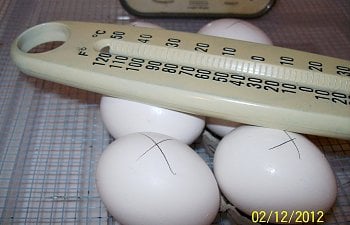
Humidity
When using a broody hen, you will not need to worry about humidity. The hen will naturally keep the eggs at the correct level. When using an incubator, humidity needs to be controlled. Incorrect humidity is often the cause of a failed hatch because humidity tends to be overlooked. If the humidity is too high, air cells will be undeveloped resulting in drowned chicks at the time of hatch. If the humidity is too low, air cells are overly developed resulting in chicks being unable to get into hatching position and if they are unable to get into the correct position, they often times suffocate in the shell. Humidity is released according to the surface area.
To increase humidity, increase the surface area of the water. To decrease humidity, decrease the surface area of the water. Raising or lowering depth won’t affect the humidity levels. Humidity is measured with a hygrometer. The most commonly recommended percentages are 50% humidity for the first 18 days of development, and 65% for the last 3 but there are other recommendations including dry incubation which confuse many people. The truth is, the correct humidity is different for everyone. It depends on where you live, the season, and many other factors. To figure out what humidity the eggs should be at, use an air cell chart or a scale. Air cell charts are used commonly and can be found on google images. Compare air cell sizes on days 7, 14, and 18 to the chart. If air cells are too large, increase the humidity. If they are too small, decrease the humidity. And of course, if they are correct, leave the humidity be. You can do the same thing by tracking the mass of an egg. An egg needs to lose a certain percentage of its mass before hatching.
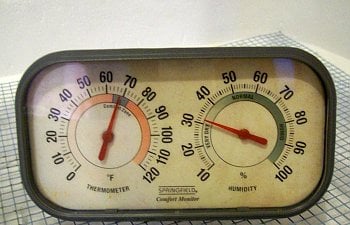
Egg turning
A broody hen will naturally turn her eggs many times throughout the day for the first 18 days, but when using an incubator, you are in charge of turning them. Eggs should be turned 3 times a day for the first 18 days of incubation. They are turned so that the embryo doesn’t stick to the shell. Unturned eggs risk deformities. You can either purchase an automatic egg turner, or you can turn the eggs manually. Automatic turners will turn the eggs for you but can be expensive. If you’d like to manually turn your eggs, you should mark them with an X on one side and a 0 on the other with a pencil. This way you know which way to turn the eggs during each turning session. Turning should be done in fairly equal intervals so if you are going to turn them 3 times a day, you should turn them every 8 hours. You must stop turning the eggs on day 18 so that the chicks can get into hatching positions. If you continue turning, they could become disorientated.
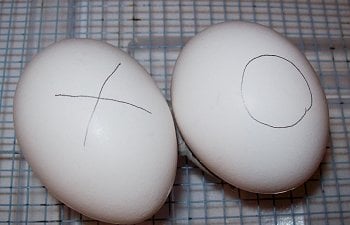
Ventilation
When using a broody hen, you won’t have to worry about ventilation; the hen will take care of it herself. When using an incubator, you must be sure to have proper ventilation. If you purchased your incubator, most likely it’s already ventilated, though if you made your own incubator, you must provide adequate ventilation. Don’t overly ventilate as it will be hard to create a stable temperature and humidity, but embryos could suffocate if there is too little of it. To ventilate, simply put holes near the bottom of the incubator as well as the top. Heat rises, so warm air will flow through the top holes while at the same time drawing fresh air from the bottom holes.
Risks of a Broody Hen
There are some risks involved with broody hens. Hens will sometimes abandon their nests for no apparent reason. The eggs are left in the cold to slowly die which can be quite frustrating for the owner. Hens also sometimes break their eggs. They aren’t very gentle with the eggs and no matter how much bedding is in their nesting box, eggs may break. To help prevent eggs from breaking, keep the bedding full and don’t let her have too many eggs. Another possibility is the hen pooping on her eggs. The poop will block the eggs' pores and increase the chances of bacteria invading. Also, rotten eggs tend to go unnoticed. If left unattended, they will explode all over the hen and the other eggs from the buildup of gases. If this happens, first change the bedding material, then quickly wash the eggs (they are covered in bad bacteria), and then bathe the hen. You will have to blow dry her very well so that she can keep her eggs warm and you must do this very quickly so that the eggs don’t sit out for too long. I have done this before and received a 100% hatch rate (except the egg that exploded).
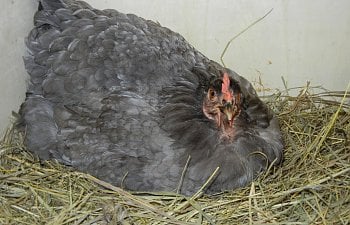
Risks of an Incubator
Since incubators are usually run on electricity, power outages are a common problem. If this happens, heat some water in water bottles and place them in the incubator. You can also cover the incubator with a blanket to help hold in its heat. Other risks include human errors such as forgetting to turn, or incorrect temperatures and humidity.
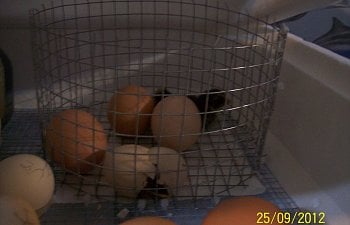
Here's a quick summary:
Broody Hen Pros
- You don’t need to collect and store eggs.
- You don’t have to monitor temperature or humidity.
- You don’t have to worry about eggs being turned or proper ventilation.
- You don’t have to worry about power outages.
Broody Hen Cons
- Some hens won’t ever go broody.
- You can’t force a hen to go Broody.
- Can only be used in the spring and summer (whenever she decides to go broody)
- A limited number of eggs to be hatched.
- Requires a clean area away from the other chickens.
- Hens may abandon their nest.
- Hens may poop on their nest.
- Hens may break their eggs.
- Rotten eggs have a tendency to go unnoticed.
Incubator Pros
- Easy to obtain.
- Can be used any time of the year.
- Can hatch any number of eggs.
Incubator Cons
- You must collect and store eggs yourself.
- You must monitor temperature and humidity,
- You have to turn eggs and ensure proper ventilation.
- Power outages can be devastating.
- Lots of room for human error.
As you can see, there are advantages and disadvantages to both. If you would like a few chicks in the spring, you may want to use a broody while if you’d like to hatch large numbers year-round, you’ll probably want to use an incubator. This information is only to make you aware of the different aspects between the two. Once you make your decision, be sure to do further research.
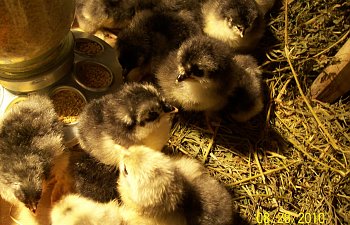
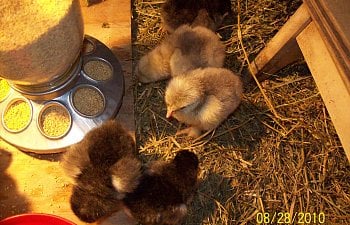
Happy Hatching!
